The Foundation and Early Development of Queen’s College Belfast, 1845-1850
In 2020 Queen’s is celebrating the 175th anniversary of its foundation as Queen’s College Belfast. Queen’s College Belfast was founded alongside its sister Colleges in Cork and Galway by the passing of the Colleges Ireland Act in 1845. The establishment of the Queen’s Colleges was part of the government’s plan to extend university education in Ireland because up until then the only university in Ireland was the University of Dublin, Trinity College.
The Queen’s Colleges were formally brought into existence on 30 December 1845 by Charters of Incorporation and were named in honour of the reigning monarch, Queen Victoria. All three Colleges were incorporated on identical terms.[1] The Charter of Queen’s College Belfast stated that a perpetual college would be established, ‘in or near the town of Belfast…for students in arts, law, physic, and other useful learning, which college shall be called by the name of Queen’s College, Belfast[2].
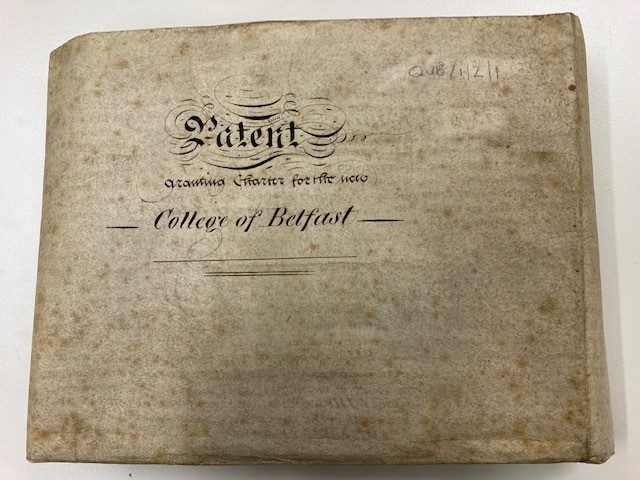
The Queen’s Colleges were government institutions and as such the College Presidents had to submit annual reports to Parliament.
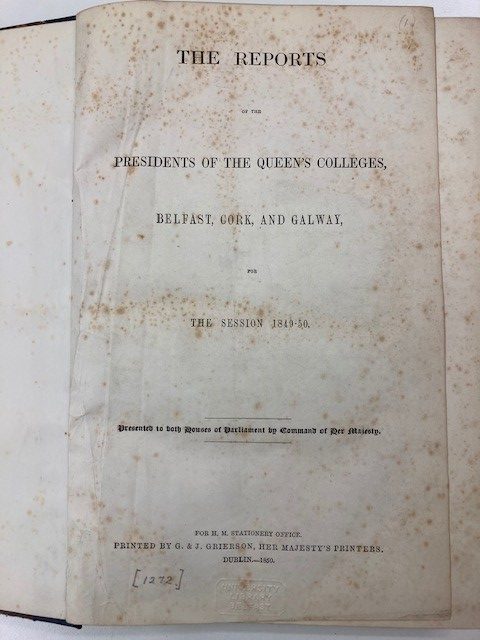
Appointment of the first President, Vice-President and Professors
The first President and the first Vice-President of Queen’s College Belfast were both appointed in 1846 and they both retired in October 1879. The President was Dr Pooley Shuldham Henry who was minister of the First Presbyterian Church, Armagh. He obtained a D.D., Doctor of Divinity, from the University of Glasgow and he was one of the Commissioners for National Education in Ireland. Moody and Beckett, who compiled a history of Queen’s from 1845-1949, described him as being, ‘eminent for discretion, moderation and decorum’[3].

The first Vice-President of the College was Thomas Andrews who also held the Chair of Chemistry and he was a practicing physician in Belfast. He was widely educated having attended the Universities of Glasgow, Paris, Trinity College Dublin and Edinburgh, and J.C Beckett described him as being, ‘a scholar of European reputation’[4].
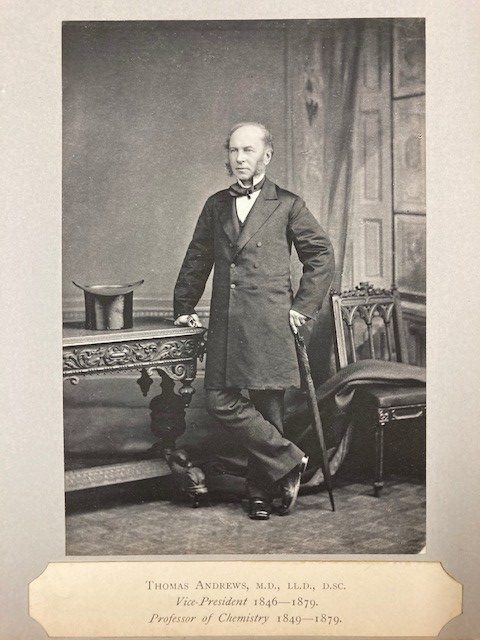
Applications for the Chairs in the College were assessed in the period January – May 1849 and the names of those who were appointed were published in August 1849.[5]
The Construction of the Queen’s College Belfast Building
Once Queen’s College Belfast was formally established it was necessary to locate a site and to construct buildings. The Commissioners of Public Works in Ireland held the responsibility of acquiring land and building the three College buildings. In January 1846 Charles Lanyon, who was the Surveyor of county Antrim, was appointed as the architect of the Belfast College and a site near the Botanic Gardens was approved for the building[6]. Charles Lanyon compiled a series of architectural plans for the College in 1847 and construction, of what is today the front and the south side as far as the archway, of the main building was finished in 1849.
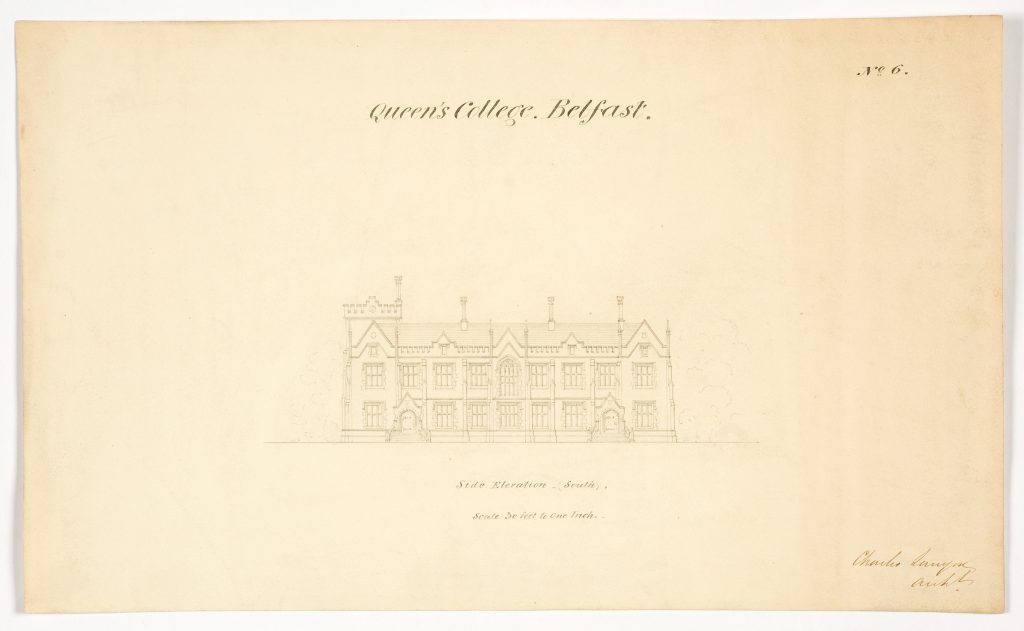
A permanent mark of remembrance to Queen Victoria, ‘VR 1848’, is included in the main building in diapered brickwork on the chimney breast of what was originally the President’s residence[7] and what is now the Vice-Chancellor’s Office.
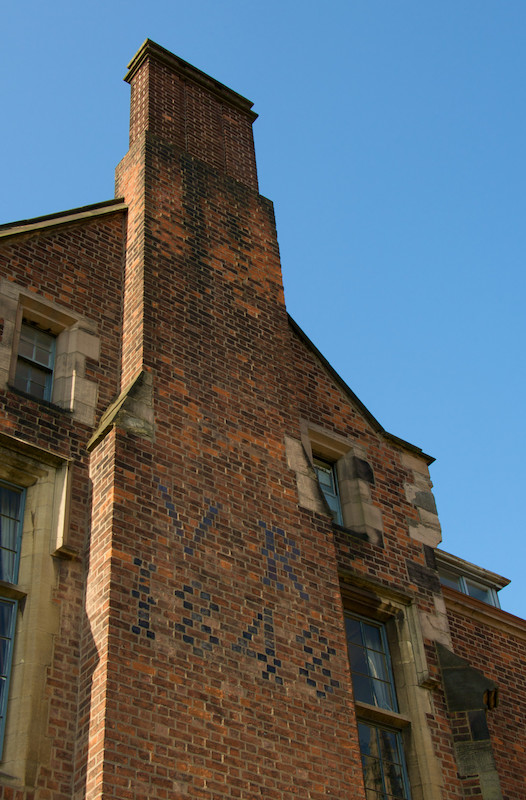
In August 1849 Queen Victoria and Prince Albert were on a state visit to Ireland and this included a visit to Belfast on 11 August. Part of their itinerary was to attend a reception in the Botanic Gardens, which borders Queen’s, and whilst they were there they took the opportunity to visit the newly built College.[8] To mark the visit the Queen signed the Roll book.
The First Queen’s Students
In 1849 the first matriculation examinations were held in each of the Queen’s Colleges on 30-31 October and lectures began in Queen’s College Belfast on 7 November. There were three faculties in the College, Arts, Medicine and Law.
The registration details of the first students who entered the College are recorded in the Register of Queen’s College Belfast, 1849-1877. Details in the Register include the student’s name, their age on entry to the College, the name of their father, their home address, the school they attended prior to entry to the College, their religious denomination, the date they sat the matriculation examination and other College examinations, the subjects they studied and their degree.
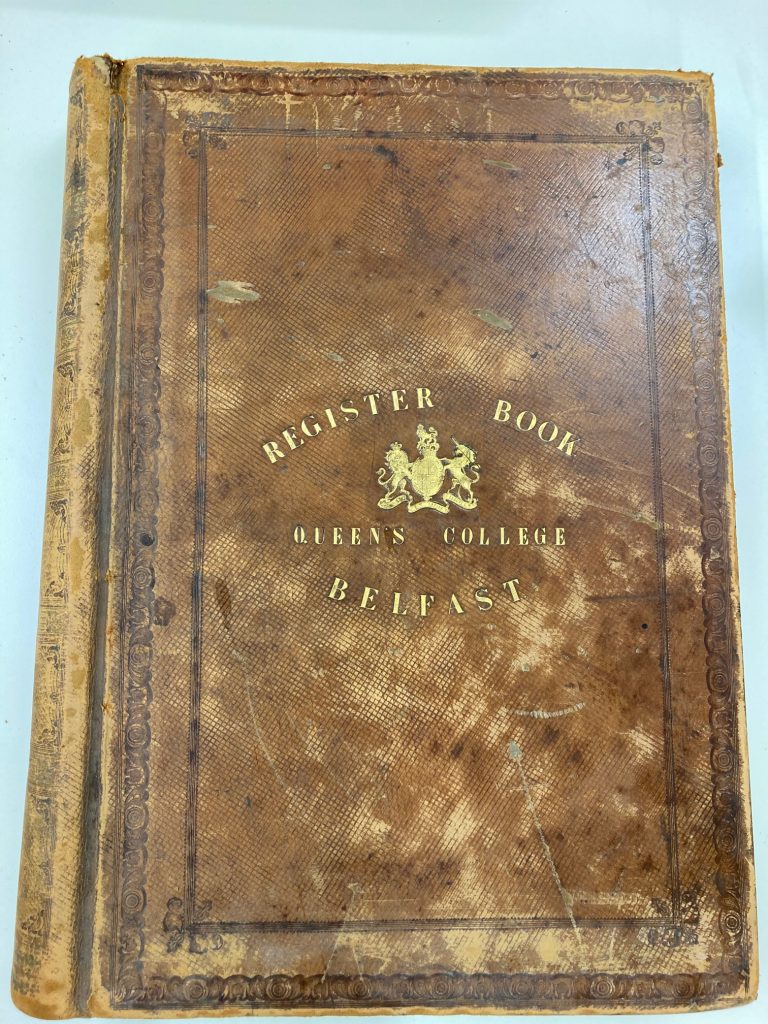
Due to lack of funding from the government the provision of any facilities to allow for a student social life was not possible in the early years of the College. However, the students themselves made efforts to forge collegiate feeling and a successful example of this was the foundation of the Literary and Scientific Society, the first Queen’s student society, in February 1850. The ‘Literific’ was a debating society and it attracted a strong membership. The first President of the Literific was E.L. Godkin who went onto become a journalist and co-founder and editor of The Nation, a weekly liberal magazine, in New York in 1865.
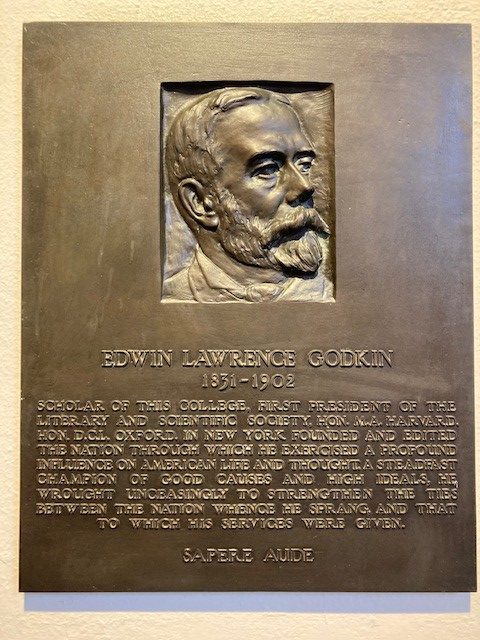
Queen’s in 1850
By 1850 Queen’s College Belfast was up and running. Teaching had begun with both students and professors getting settled into College life, the College buildings were being heavily used and the President and Vice-President were navigating an entirely new higher education environment alongside their colleagues in Cork and Galway. From these firm foundations Queen’s, Belfast has developed and grown into the university we know today.
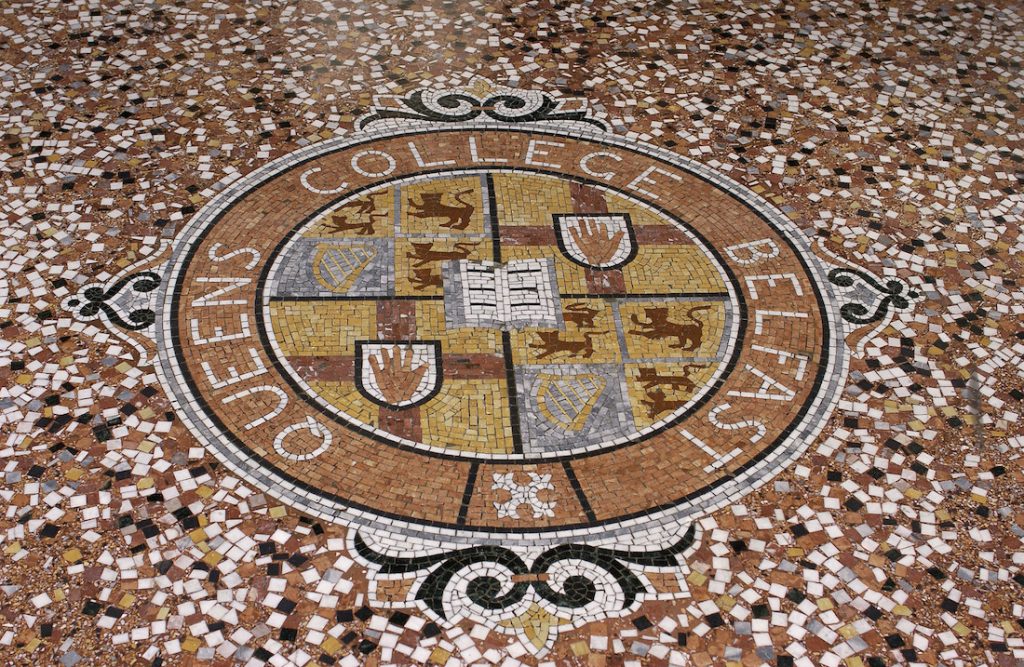
[1] Moody, T.W., and Beckett, J.C., Queen’s, Belfast, 1845-1949. The History of a University, London, 1959, page 39
[2] QUB/1/2/1, Charter of Queen’s College Belfast, 30 December 1845
[3] Moody, T.W., and Beckett, J.C., op cit, page 35
[4] Beckett, J.C., Queen’s, A Short History of Queen’s College Belfast and The Queen’s University of Belfast, n/d, page 2
[5] Moody, T.W., and Beckett, J.C., op cit, pages, 64-65
[6] Moody, T.W., and Beckett, J.C., op cit, pages, 103, 109
[7] Queen’s, An Architectural Legacy, David Evans and Paul Larmour, Belfast, 1995, page 3
[8] Moody and Beckett, op., cit, page 123



